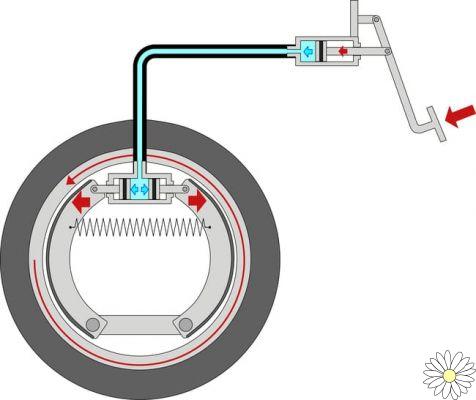
Introduction
Welcome to Pistonudos.com, where we are passionate about the automotive world and we want to share with you valuable information about the components and operation of the brake system. In this article, we'll cover both the general and specific aspects of drum and disc brake systems. In addition, we will explore the parts and elements that make up this system and how it works as a whole. Let's get started!
Brake System Components
A vehicle's braking system is made up of several essential components that work together to stop the wheels from moving. These components include:
- Disc or drum brake
- brake caliper or shoe
- brake lines
- brake fluid
- Master cylinder
Disc Brake System Operation
The disc brake system uses a brake disc and caliper to create friction and stop the wheels from moving. When the driver steps on the brake pedal, hydraulic pressure is transmitted to the caliper, which presses the brake pads against the disc, creating friction and slowing the vehicle down.
Drum Brake System Operation
The drum brake system uses a brake drum and shoe to create friction and stop the wheels from moving. When the driver steps on the brake pedal, hydraulic pressure is transmitted to the shoe, which expands and presses against the drum, creating friction and slowing the vehicle down.
Parts and elements of the brake system
In addition to the components mentioned above, the brake system also includes other important parts and elements, such as:
- Brake pad wear sensor
- return spring
- brake adjuster
- brake compensating valve
- brake booster
Frequently Asked Questions (FAQs)
1. What is the difference between disc brake system and drum brake system?
The main difference between these two systems lies in the way they generate friction to stop the vehicle. While the disc brake system uses a disc and caliper, the drum brake system uses a drum and shoe. Both systems are effective, but the disc brake system tends to offer better braking performance and higher heat dissipation capabilities.
2. When should I replace the brake pads?
Brake pads must be replaced when their thickness reaches the minimum limit recommended by the vehicle manufacturer. Also, if you hear screeching or noise when braking, the pads may be worn and need to be replaced. It is important to regularly check the condition of the brake pads and replace when necessary to ensure safe and efficient braking.
Conclusion
In summary, the braking system is a fundamental part of any vehicle and its proper functioning is crucial to ensure safety on the road. Both disc and drum brake systems have their own characteristics and advantages, but all brake systems share essential components such as the disc or drum, the caliper or shoe, the brake lines, the brake fluid, and the cylinder. teacher. Keeping these components in good condition and performing regular maintenance is essential for safe and efficient braking.
We hope this article has been informative and has answered all of your questions about brake system components and operation. If you have any other questions or comments, feel free to leave them below. We would love to hear your opinion!
Until next time!
The Pistonudos.com team


























